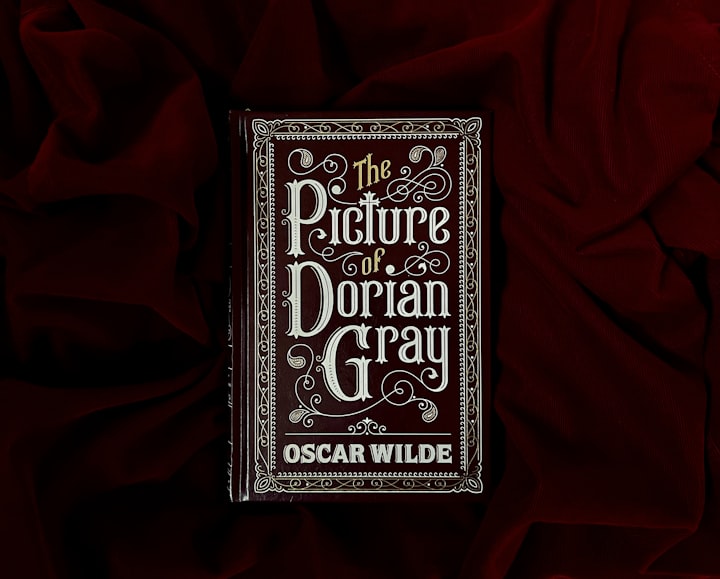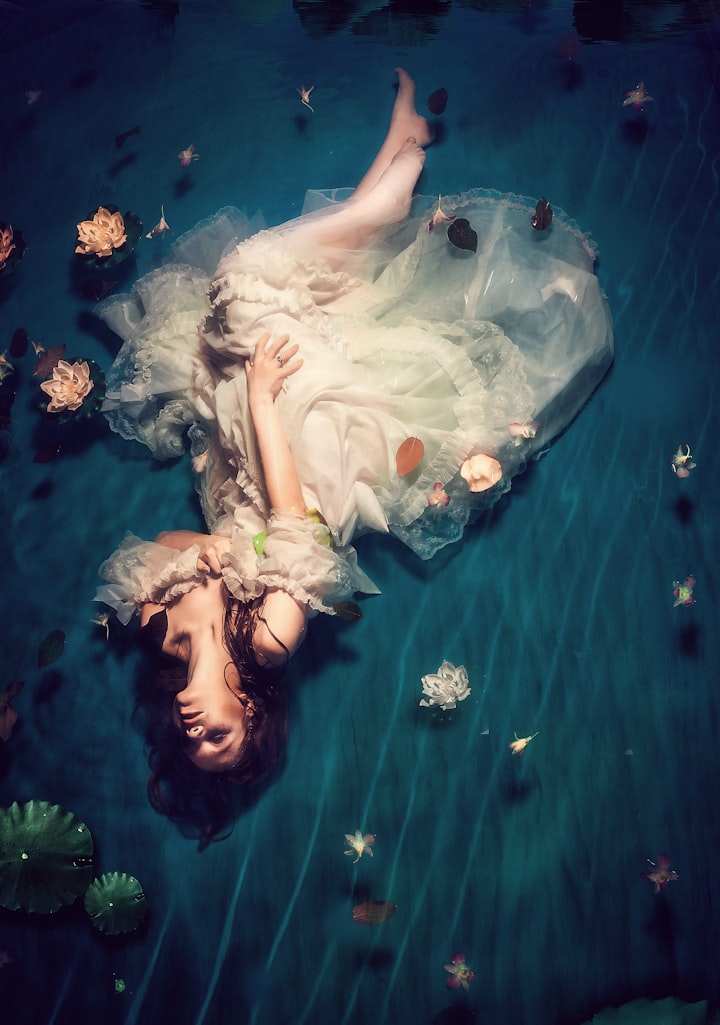When first beginning to read The Picture of Dorian Gray by Oscar Wilde, the reader is immediately met with an extremely detailed preface by the author of what qualifies as art, what gives art its unmistakably clear definition, and most importantly what serves as the sole function and purpose of art; and in addition, the author explains in great detail the role of the artist in the process of creating works of art. According to Wilde, the artist must not seek to prove anything through their work nor should their work serve as a means of morality to those who observe it by use of the five senses: touch, taste, sight, smell, and sound. As a creator, the artist is to simply take a medium and craft it to the point where others may delight in its aesthetic properties, present or absent. The point of art is to exist. The artist cannot give art usefulness pertaining to morality otherwise it cannot be considered art at all.
Oscar Wilde, however, goes against this very perspective and ideal of aesthetic creations and their creators through the storyline of and characters within The Picture of Dorian Gray. If one reads with the utmost discretion and a discerning mind, it is revealed that the principle characters, Basil Hallward, Sibyl Vane, Henry Wotton, and of course Dorian Gray; are true testaments as to what could happen if art is misappropriated and if it is wielded correctly. By observance of the preface and how it contrasts and compares with the story told through the aforementioned individuals, each with their own artistic mediums, the overall downfall of all is easily predicted.
First off, Basil Hallward serves as to clarify what should happen if an artist becomes too involved with their artwork to the point where the creator is reflected more than the subject which inspired it. When Basil has Dorian sit for the portrait, the artist comes to realize that in painting Dorian, he has poured his own personal essence into it transforming the painting into a product of idolatry rather than an objective view of the young man. Upon discussing the idea of exhibiting the portrait, Basil Hallward merely gives the following explanation to his friend Henry Wotton: “I really can’t exhibit it. I have put too much of myself into it” (Wilde 13). According to Houston A. Baker, Jr., author of journal “A Tragedy of the Artist: The Picture of Dorian Gray”, Basil Hallward began on the correct path towards self-realization in his art, but went astray in painting Dorian because in doing so he deviated from presenting an “abstract sense of beauty”, which all artists must do in reference to Oscar Wilde’s Preface, by placing “his own idolatry and worship of the physical embodiment of his ideal” (Baker 5). In allowing Dorian’s beauty and youth to captivate the artist, Basil has in a way offered up his own soul to this attractive youth by allowing his obsession and love for him to absorb him to the point of these sentiments burning through into his own chosen medium of paints, brushes, and canvases. Although Basil attempts to resist the thought of Dorian’s beauty possessing him, he eventually succumbs, he “does give away his soul, he does fall in love with a boy who symbolizes the harmony of soul and body, and he soon comes to feel that he could not live as an artist without Dorian” (Oates 5). Despite all of this, the true point at which he contributes to his own destruction as well as Dorian’s is when he singles Dorian out as a motive for painting. This is to say that Basil Hallward is not in love with Dorian Gray, but rather “with his own image of Dorian, which is to say, his own ‘motive’ in art”; “Basil is fated to single out Dorian for his art and by means of his art to force Dorian into a tragic self-consciousness: by appropriating the boy's image in answer to an artistic motive he begins the boy's destruction, and it is altogether fitting that Dorian should murder him some years later” (Oates 5). Overall, in singling Dorian out as a motive for creation and art itself, Basil causes Dorian to become self-conscious leading to his downfall, causes his own artistic ideal to become corrupt, and ultimately signs his own death warrant.
Subsequently, one comes to find folly in the ideal of an artist becoming too consumed within their own mode of art to the point that they begin to apply it to their own personal lives, moral judgments, and way of life in general through the tragic character of Sibyl Vane, Dorian Gray’s romantic interest. When Sibyl Vane is first introduced in the story, Dorian Gray sees her as what he conceives to be the greatest artist of both his and her time when he sees her perform her role as Juliet in the play Romeo and Juliet; he goes as far as to elevate her upon a pedestal by giving her the title of “genius” when he speaks of her and his amorous sentiments towards her to Henry Wotton. However, when Henry Wotton inquires further about Sibyl Vane the following discourse takes place:
“’To-night she is Imogen,’ he answered, ‘and tomorrow night she will be Juliet.
‘When is she Sibyl Vane?’
‘Never.’
‘I congratulate you.’
‘How horrid you are! She is all the great heroines of the world in one. She is more than an individual. You laugh, but I tell you she has genius. I love her, and I must make her love me...I want to make Romeo jealous. I want the dead lovers of the world to hear our laughter and grow sad. I want a breath of our passion to stir their dust into consciousness, to wake their ashes into pain. My God, Harry how I worship her!’” (Wilde 55).
Through this passage, one can see that she is able to reflect artistic ideals by giving the roles she performs a certain emotional depth which she can imitate quite skillfully and passionately. The real trouble begins when she ceases to imitate, reflect, and portray the traits of those characters which caused Dorian to become smitten with her in the first place. At first, “the actress Sibyl Vane is to Dorian an empty vessel that the soul of the world comes to fill” which gives her a sort of appeal and causes an imitation of love to develop between them because she can “give a soul to others only because she has none of her own” (Humphreys 5). However, when she claims to have found her own identity through falling in love with Dorian, she is deemed worthless to him because she can no longer imitate. Consequently, she only existed because she represented others, her identity was associated with her ability to perform and pretend well; she lost all value to Dorian as an artist because she allowed herself to be taken by her own moral senses which caused her art to appear hollow because of its lack of reality; the artist serves only to create beauty or ugliness so distorted that it can be considered beautiful and to apply matters of reality or moral undertones is to destroy art completely. When she is ultimately cast aside by Dorian, she spirals into a downfall that she is not prepared to deal with since she has spent the majority of her life in the theater and has known very little of life which drives her to commit suicide as Ophelia (i.e. drowning herself) and inevitably leads to leaving her mark upon Dorian’s supernatural amorphous picture.
Contrary to the aforementioned characters and their mediums, Henry Wotton appears to be the only individual who remains faithful to Oscar Wilde’s preface concerning the artist and their designated artistic approaches. Throughout the story, Henry Wotton, although perceived as immoral, crude, and entirely vulgar is shown as a true artist whenever he feels moved to speak upon a matter concerning that of society, sentiments, values, morals, and their overall worth to him. Henry’s own personal art form is that of speech, intellectual wit, and clever word-weaving and although he does speak in certain elaborate ways, his words, though greatly received both positively and negatively; do not in any way reflect his true nature or emotions. Two instances of Henry’s philosophically seductive yet entirely naïve and contrary epigrams are as follows: “The only way to get rid of a temptation is to yield to it. Resist it, and your soul grows sick with longing for the things it has forbidden to itself, with desire for what its monstrous laws have made monstrous and unlawful” (Wilde 25-26); and “Dorian, you will always be fond of me. I represent to you all the sins you have never had the courage to commit” (Wilde 75). Despite all that he claims or states as personal truths, Basil Hallward reveals that he himself is well aware that Henry does not believe half of what he says the majority of the time by responding “You don’t mean a single word of all that, Harry; you know you don’t. If Dorian Gray’s life is spoiled, no one would be sorrier than yourself. You are much better than you pretend to be” (Wilde 71). In short, although Henry Wotton is mostly to blame for contributing to the downfall of the main character, he himself does not change because he utilizes his form of art as a means to only shock, amuse, and delight where in his actual life he is highly involved in high-society, avoids scandalous behavior, and is indeed married himself.
Finally, through the character of Dorian Gray and his beauty one is able to see that utilizing art in order to validate one’s moral or immoral actions is not only nonsensical but comes with incredibly treacherous consequences. The main idea of art is to merely appreciate the work for what it is and to go deeper than that is to basically ask for trouble according to the preface of Oscar Wilde. With the unintentional suggestion of Basil Hallward and the toxic words of youth and beauty spoken by Henry Wotton, Dorian deviates from the traditional aesthetic ideals by way of unconsciously transmitting his soul through means of a wish to remain youthful into the painting so that any malfeasance, spiritual and physical, would reflect upon the portrait itself rather than on him. There is a “primary narcissism” established and the ego begins to form when Dorian Gray “comes to identity-recognition at age twenty while standing ecstatically before a painting of which he ‘himself’ had recently been ‘the original’, just as he is also about to become its counterfeit or conceit” (Craft 19). Moreover, according to journal author John Allen Quintus, art “does not make people ‘bad’ or ‘good’” because art “does not move people to action and thus has no prescriptive or authoritative moral purpose” (Quintus 11). Through the evidence located in several texts, it can be seen that in regards to corruption and ultimate moral decay, Dorian Gray in the long run brought about his own ruin because he made the portrait of himself into something that it should not have been made into in the first place: an idol of and a tribute to his vanity.
In conclusion, the four characters which made up the base matter of the storyline of The Picture of Dorian Gray are discovered to have brought about not only the ruin of their own aesthetical ideals, but their very lives; save for Henry Wotton who remains unchanged and unmarked. However their misadventures are not told in vain as Oscar Wilde has revealed a sort of method to the madness that constitutes the very heart of this novel: art is to be created objectively with no ulterior motive, it must conceal the artist, and its sole purpose is to be useful in being completely useless. One can only hope that the readers have grasped this concept as they have read this composition with the greatest of care and attention devoted to every paragraph. If not, one ought not to be surprised if a similar fate should befall the next prospective young artist who decides to create with a corrupt ideal of what art should be without any real knowledge as to what art really is. That would be a grave mistake indeed, one that could cost the artist their livelihood, sanity, and perhaps their very life.
Works Cited:
• Baker, Houston A. "A Tragedy of the Artist: The Picture of Dorian Gray."JSTOR. University of California Press, n.d. Web. 03 Dec. 2014. <http://www.jstor.org/stable/2932864>.
• Craft, Christopher. "Come See About Me: Enchantment of the Double in The Picture of Dorian Gray." JSTOR. University of California Press, n.d. Web. 03 Dec. 2014. <http://www.jstor.org/stable/10.1525/rep.2005.91.1.109>.
• Humphreys, Kathryn. "The Artistic Exchange: Dorian Gray at the Sacred Fount." JSTOR. University of Texas Press, n.d. Web. 03 Dec. 2014. <http://www.jstor.org/stable/40754949>.
• Oates, Joyce Carol. ""The Picture of Dorian Gray": Wilde's Parable of the Fall."JSTOR. The University of Chicago Press, n.d. Web. 03 Dec. 2014. <http://www.jstor.org/stable/1343135>.
• Quintus, John Allen. "The Moral Implications of Oscar Wilde's Aestheticism."JSTOR. University of Texas Press, n.d. Web. 03 Dec. 2014. <http://www.jstor.org/stable/40754628>.
• Wilde, Oscar. The Picture of Dorian Gray. London: Flame Tree, 2013. Print.
About the Creator
Minna G
An eclectic witchy woman here to hone her craft as a desperate attempt to create some sense out of the maddening chaos that is her own mind.







Comments
There are no comments for this story
Be the first to respond and start the conversation.